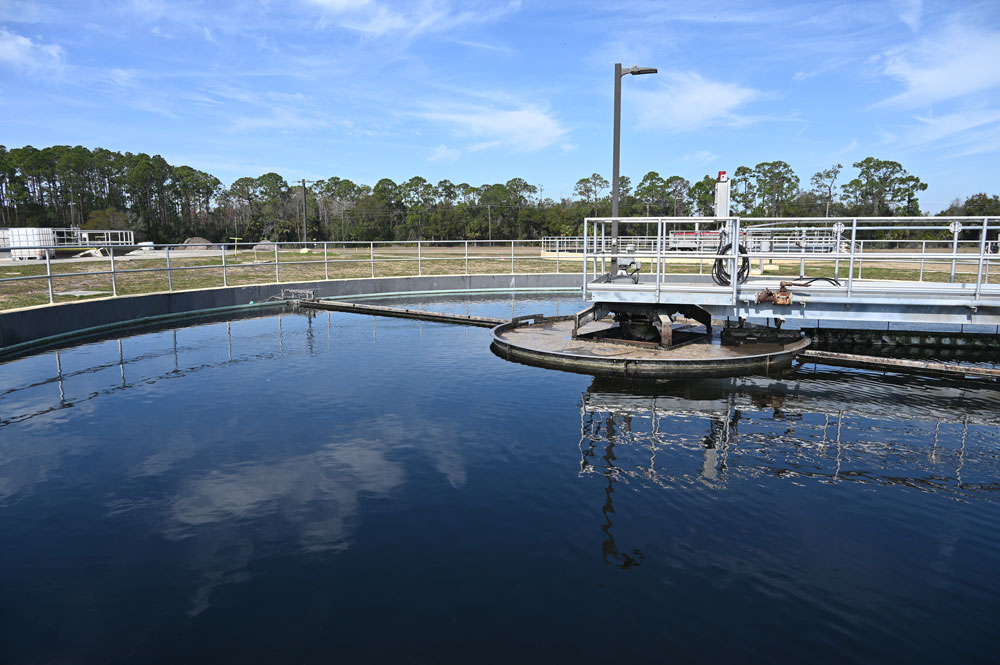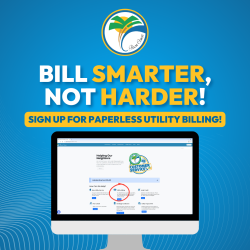
Note: This is a companion piece to another article on the subject: “Palm Coast Council’s Theresa Pontieri Calls for Stronger Controls on City Utility to Protect Against Privatization.”
![]()
Palm Coast’s first utility department was established in 1970 by ITT, the developer, when Palm Coast was the size of a small subdivision. ITT sold the utility to Florida Water Services in 1999, the year Palm Coast incorporated. Florida Water was owned by Duluth, Minn.-based Allete, which through its subsidiaries subsequently became–and remains–the principal landholder of Palm Coast’s Town Center.
Florida Water had served some 150 communities, including Palm Coast and the barrier island but not Flagler Beach. In 2002, Allete was interested in selling Florida Water for $520 million, later lowered to $439 million.
That year the Florida Governmental Utility Authority made a play for Florida Water Services. The Authority was created in 1999 and was made up of four Florida counties: Citrus, Nassau, Polk and Sarasota. At one point, Dick Kelton, then the city manager in Palm Coast, was hoping for the city to become part of the authority, because the city was nervous to have its utility controlled by other government entities.
If the authority were to acquire the utility in Palm Coast, it would mean that the city’s utility was under the control of those northern counties, and that they could use it as a cash cow, though that would have been no different than Florida Water using it to the same end.
The authority never acquired the utility. Nor did a subsequent authority created by the cities of Gulf Breeze and Milton, which also made a play for Florida Water. Palm Coast was among the communities that sued to block the sale.
Palm Coast also sought to condemn the local utility and take it over, letting a judge set the price. That never happened, either. The eminent domain suit was more likely a strategic move on the city’s part to force Allete’s hand into negotiating a separate sale of the utility. Until then, Allete was adamant that it wanted to sell all 150 Florida Water properties together.
When a Leon County judge ruled in favor of blocking the sale, Allete began negotiating with Palm Coast. It agreed to sell in July 2003, and on October 30, 2003, Palm Coast became the utility’s owner. It floated an $89.6 million bond to pay the $82.3 million price and expand the utility. The city still owes $60 million.
City officials insisted that owning the utility would help them control costs to ratepayers.
It may not seem that way to local residents, although the numbers, despite recurring rate increases, remain on the city’s side. The city last March approved the latest of those increases, a 31 percent rate hike over three years, to help finance a nearly half-billion dollar bond issue and pay for expansion and modernization of Wastewater Treatment 1 in the Woodlands, the city’s oldest, as well as numerous other additions to the system.
The council previously raised rates in 2018 and in 2012.
The city’s Wastewater Treatment Plant 1 last year was put under a state consent order to build up capacity and modernize, forcing the council’s hand to increase rates and borrow to pay for improvements. A previous council had resisted raising rates, though it raised development impact fees substantially.
Has the 2003 promise of keeping rates in check been kept?
After the first year of ownership–in October 2004–the monthly base water rate was $12 and $3.33 per 1,000 gallons. In today’s inflation-adjusted dollars, using the U.S. Bureau of Labor Statistics’ calculator, that would be $21.45 and $5.95.
The monthly base sewer rate was $10.07 and $2.79 per 1,000 gallons, or $18 and $5 in today’s dollars.
The actual base water rate for a single-family house today is $25.92 a month and $7.02 per 1,000 gallons. The base sewer rate is $25.46 and $6.59 per 1,000 gallons.
Put another way, after 21 years in ownership, Palm Coast is charging a water rate about 20 percent above what it was in 2004, after accounting for inflation, and a sewer rate 41 percent above what it was in 2004.
That may seem like a steep increase. In fact, it is not, when compared to national trends.
According to the Bureau of Labor Statistics, the national average price increase of water and sewer utilities across the country between 2004 and 2025 is 153 percent, when comparing rates in unadjusted dollars. In Palm Coast, the unadjusted water rate has increased 116 percent, significantly less than the national average. The unadjusted sewer rate has increased 153 percent–identical to the national rate.
Today, the system consists of three water treatment plants, two sewer plants and 830 miles of transmission lines. The water facilities treat an average of 298 million gallons per month, or 9.8 million gallons per day.
In 2023, the last year for which complete figures are available, Palm Coast’s water and sewer utility generated $57 million in revenue through rates (projected revenue for 2025 was $65 million) and $15.5 million in development impact fees ($14.2 million projected for 2025). This year, the utility has 166 employees.





























Water boy says
I thought the history went something like this: built 1977. Nothing has been done since.
Deborah Coffey says
Very good data. Now, raise the impact fees again, and we’ll be in good shape. Builders need to do their part just like everyone else.
In Palm Coast says
“… the unadjusted water rate has increased 116 percent, significantly less than the national average.”
I (should) call THAT a bargain… the best I’ve eveeeeeer seen???
The BEST I’ve ever seeeeeeen?!?